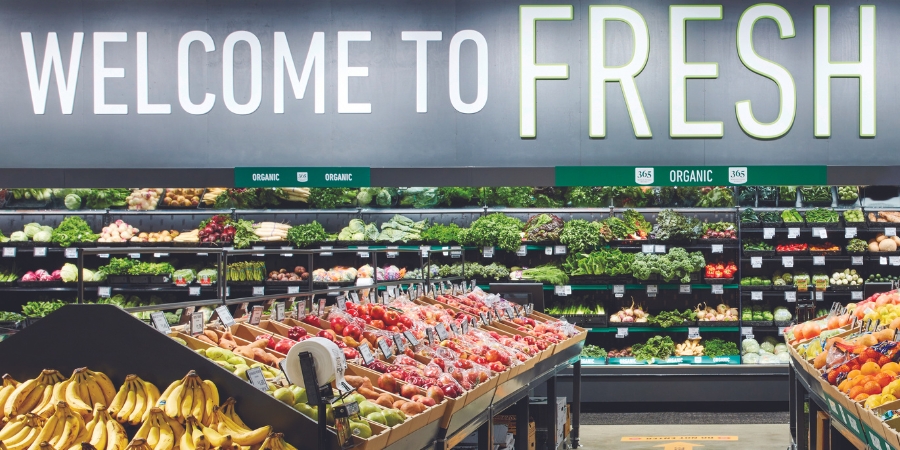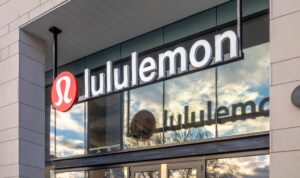
Photo: Amazon
August 11, 2023
Are Amazon Fresh’s Revamped Stores the Differentiator CEO Andy Jassy Wants?
Amazon has been working to perfect the brick-and-mortar grocery experience since it acquired Whole Foods Market in 2017 and added its personal touch to food retailing when it launched the first physical Amazon Fresh store in 2020.
Headwinds in the space caused the e-commerce giant to pause its grocery expansion earlier in 2023 while it experimented with the format, but two newly revamped stores near Chicago are a sign that it is working back toward a promised expansion.
“We’re doing a fair bit of experimentation today in those stores to try to find a format that we think resonates with customers,” Amazon CEO Andy Jassy told investors on a Q4 2022 earnings call. “It [has to be] differentiated in some meaningful fashion and [we have to] like the economics. We’ve decided over the last year or so that we’re not going to expand the physical Fresh doors until we have that equation with differentiation and economic value that we like, but we’re optimistic that we’re going to find that in 2023.”
A potential example of that differentiated format may be seen at the two redesigned Amazon Fresh stores in the Chicago suburbs of Schaumburg and Oak Lawn, Illinois.
The locations have added hundreds of additional national and private label brands, with dairy, snacks, home care, health, and baking products seeing the largest additions. Customers can find new grab-and-go items, ranging from snack boxes to bake-at-home pizzas, as well as in-store Krispy Kreme Doughnut shops offering treats and coffee.
Families with children will benefit from kid-friendly shopping carts and stickers. Additionally, the stores will host family-friendly seasonal events and offer a new “Fruit Freebies for Kids” program that lets families take a piece of fruit from a special cart in the produce department.
The Amazon Fresh locations also feature the latest Dash Carts, which help customers navigate the store and can sense items placed inside to let shoppers skip the checkout line. The new cart models are allowed into the parking lot to maximize convenience.
While the revamped stores may be part of the equation Jassy is seeking, the retailer has not confirmed whether it is ready to return to growth mode.
The company eliminated hundreds of jobs at Amazon Fresh stores in late July, according to The Washington Post. Amazon, like the other tech giants has been cutting jobs across the board to rightsize its staffing after the pandemic-driven hiring surge. The number of layoffs hit a total of 27,000 as of late March, according to The Associated Press and other media outlets. As reported by CNN, other cost-cutting efforts earlier this year include the closure of eight Amazon Go convenience stores.
However, there are bright signs on the horizon for Amazon despite earlier setbacks. Net sales increased 11% year-over-year to $134.4 billion for Q2 2023, bringing the company to $6.7 billion in net income for the period. In comparison, Amazon posted a net loss of $2 billion for Q2 2022.
A healthier balance sheet could give Amazon the flexibility it needs to refocus on conquering grocery the way it did e-commerce, but Amazon Fresh will be competing for attention with a number of other internal businesses while off-price grocery competitors continue grabbing market share. Additionally, the company may wait for the results of Amazon One palm readers at Whole Foods locations to see if a tech-focused approach can provide the differentiator Jassy is looking for.
Discussion Questions
DISCUSSION QUESTIONS: Have the new Chicago-area stores added enough features to achieve the meaningful differentiation Amazon Fresh needs to return to growth mode? What does Amazon Fresh need to add to its value proposition to stand out from Whole Foods Market and off-price competitors alike?
Poll
BrainTrust
David Weinand
Chief Customer Officer, Incisiv
Gene Detroyer
Professor, International Business, Guizhou University of Finance & Economics and University of Sanya, China.
Neil Saunders
Managing Director, GlobalData
Recent Discussions







Amazon is still experimenting with grocery to find a format that works. For various reasons, past iterations of Amazon Fresh and Amazon Go have not delivered the required return on investment in terms of sales and profit. Given that to become a serious player in food, Amazon is going to have to open a very large number of stores, it is not going to roll out anything that’s sub-optimal as it will simply burn through cash and put a massive hole in the bottom line. This is why grocery has been so stop-start with occasional closures and retrenchments. It is too early to say whether the new formats showcased in Chicago are the ‘ones’. However, they correct some mistakes made in earlier iterations, namely: a better selection of products, more competitive prices, more options to pay, and a footfall driver in the form of Krispy Kreme. Personally, I feel Amazon will still need to do more to differentiate as a new entrant needs a strong pull factor to disrupt established shopping habits. A player like Aldi has this because it is really focused on price; it’s a clear and compelling USP. What is Amazon’s? That question remains open – and no, it cannot be technology as that does not excite or entice the consumer.
I have never been to Amazon Fresh, but today’s discussion sparks my interest.
It sounds as if Amazon is working to define the grocery experience of the future. They seem to still be in the experimental stage. I look forward to the next iteration.
I am confident that when they are confident, they will expand successfully.
Amazon has one advantage most grocers do not – they have the capital to conduct longer-term ‘test and learn’ initiatives to better their chances for success. Even then, it is a tough, tough business and what might work in one market, may not work in another. Honestly, if Amazon can figure out how to make a small margin on this business and then use the locations for their core business to manage pick-ups and returns, it is a viable model. Otherwise it seems a distraction from their core business.
At the end of the day customers don’t come to a grocery store for the tech. Amazon has always placed too much emphasis on new in-store technologies and mot enough on food quality and prices that average shoppers can afford. I’m always rooting for Amazon to provide some healthy competition to keep major nationals on their toes, but this feels off the mark.
I agree here. There is very little being added to make it differentiator to compete among the more established grocers- big or small. I don’t know how long they will reinvent the wheel before they move on to other more profitable ventures.
Agree with you Richard. I’m frankly surprised they are still trying to crack the code on groceries. I get the draw of a recession proof product sector, and people will always need to eat. But Amazon is much better set up to take on health care than grocery.
100% DeAnn. Tech is a strong benefit, a convenience. And personally, I welcome it. But it’s not enough to pull a large enough pool of customers, to take away market share. They need to drive a stake in the ground and say what they want to say about why Amazon Fresh is going to be a better experience, a better outcome. Shoppers want to know.
Convenient, frictionless proprietary tech, and community events differentiate Amazon Fresh. Competitive pricing and deals for Prime members make it more attractive in this economy.
More store tech (digital screens, smart shelves) as retail media real estate would make Amazon Fresh a magnet for B2B ad revenue.
This looks like a regular grocery store, with presumably the same labor needs and breadth-of-supply issues. Looks like they’ve learned different neighborhoods like different kinds of fresh foods. Congratulations?
I have not been to a Amazon Fresh store however I shop Whole Foods frequently and that shopping experience has greatly diminished. I still go there, however it is shops more like a warehouse and less like the Whole Foods of old. The same army of shoppers working off of a pick list roaming the aisles like robots are one issue and the front of the store is a staging area…with fewer places to eat. Add an obvious move to self checkout (which is great with small basket sizes, large ones not so much) and you have a average store layout with a good selection of fresh food. Take that away and I go elsewhere.
“refocus on conquering grocery the way it did e-commerce” Is that really their goal ??
Let’s be candid here: while Amazon has been great on the e-commerce side – if we define “great” as capturing sales and headlines, as opposed to be insanely profitable – back in the physical world their impact is basically zero. It’s the (alleged) promise of success there, not the reality, that seems to be the excuse for lavishing so much attention on what is really more the corporate version of a hobby.
I applaud Amazon for testing, finding a better path. But there needs to be a compelling reason to shop this format beyond more tech or added product categories. Both appear to be addressing convenience and choice, which is helpful, but it doesn’t answer a primary question.
Strong grocery brands and healthy performers are good at emphasizing broadly either quality, freshness, customer service, or lower prices, deals/values. So far, I don’t see a strong lead for either at Amazon Fresh. In addition, brand stories and compelling reasons to shop still need a boost in store, woven into signage, decor, brand marketing.
Amazon Fresh must to convey why it is a better place to shop than other options the customers have within the trade area. What will customers get? What is the proof? What is the benefit? What will that end result feel like?
Walmart & others have such a head start on grocery, & Amazon will need to do more than come up with a redefined format or experience when price is the #1 consumer pillar within the category. Traditionally low margin, Amazon’s investment will need to be funded by other business divisions if they see technology as a long-term proposition. As others have mentioned they do have the capital to draw out experimentation over a longer period, however existing retailers won’t be staying still over this period.